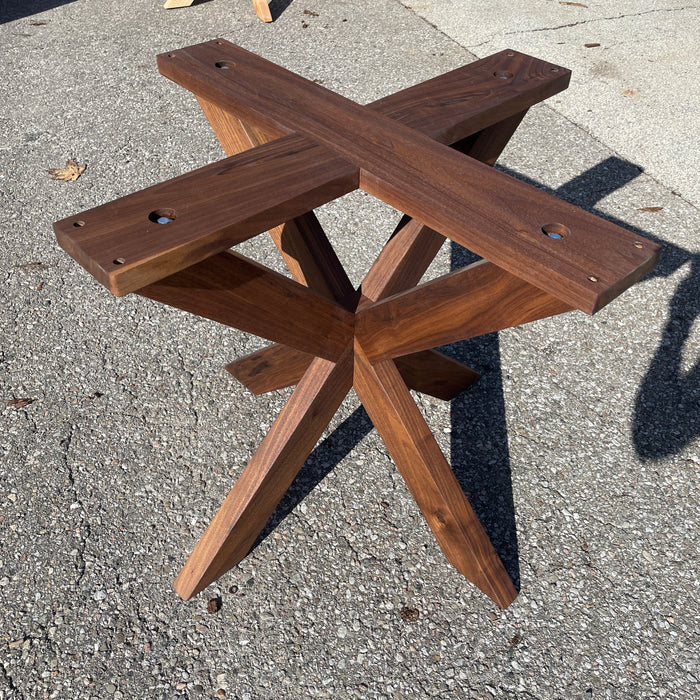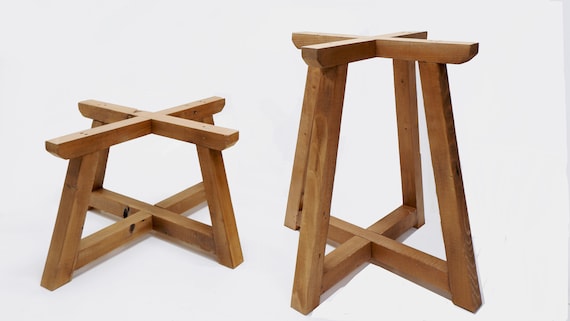Customize Your Table with One-of-a-kind Dining Table Legs Wood Creations
Customize Your Table with One-of-a-kind Dining Table Legs Wood Creations
Blog Article
Secret Elements to Remember for Dining Table Legs Timber Choices
When selecting wood for dining table legs, a number of critical elements require mindful factor to consider to ensure both performance and visual charm. The choice of wood type, defined by its durability and distinct grain patterns, plays a critical function in the general layout and long life of the item.
Timber Kind and Features
When picking timber for eating table legs, it is vital to understand the distinct qualities of different wood types. Different woods use distinct benefits and negative aspects, influencing both the toughness and aesthetic charm of the completed product.
Oak, recognized for its excellent sturdiness, also includes a noticeable grain that can include personality to the table. Cherry timber, with its rich shade that grows over time, provides an elegant look yet may call for more maintenance to avoid scrapes.
On the various other hand, softwoods like ache and fir are a lot more budget friendly and easier to deal with, yet they are much less sturdy than woods. Pine is lightweight and features a warm, rustic look, making it a preferred selection for informal dining setups. It is much more prone to damages and scrapes.
Recognizing these attributes will certainly assist in making an educated choice to guarantee the legs of the table fulfill both aesthetic and functional requirements.
Grain Patterns and Looks
Selecting the appropriate grain pattern can dramatically boost the aesthetic allure of eating table legs. The timber's grain is not simply a visual feature; it imparts an unique personality and appeal to each item. Different wood varieties display distinctive grain patterns, varying from the straight lines of maple to the detailed swirls of oak and the striking number of walnut. These patterns can evoke numerous styles, from rustic to contemporary, making it vital to select a grain that aligns with the total layout of the eating space.
Moreover, the positioning and scale of the grain can affect the viewed size and elegance of the table. As an example, larger, extra obvious grains may lend a vibrant, dramatic result, while finer, subtler grains can produce an improved, underrated look. Additionally, the completing procedure can better improve these patterns, highlighting the natural elegance of the wood and highlighting abundant tones.
Eventually, the choice of grain pattern ought to harmonize with various other layout elements, such as the tabletop and surrounding furnishings, making sure a natural visual that elevates the dining experience. Thoughtful option of timber grain not just contributes to the table's beauty yet additionally reflects the proprietor's taste and design.
Toughness and Toughness
The sturdiness and strength of dining table legs are paramount factors to consider for making sure durability and stability in any kind of eating space. Picking the ideal timber is vital, as various varieties exhibit differing levels of durability.

Eventually, investing in premium wood and durable building and construction techniques will produce a table that stands the test of time, while supplying a reliable foundation for many dishes shared amongst friends and family. Focusing on toughness Read Full Report and stamina makes sure that your dining table continues to be useful and aesthetically pleasing for years ahead.
Upkeep and Care
Appropriate maintenance and treatment are vital for preserving the sturdiness and toughness of eating table legs made from wood. Regular cleaning is important; utilizing a soft, damp cloth ensures that dirt and debris do not build up, which can lead to scrapes and monotony. It is suggested to avoid click this site extreme chemicals or rough materials that can damage the surface.
Furthermore, applying an appropriate wood polish or wax periodically can assist preserve the shine and shield the timber from wetness and spills. It is crucial to comply with the supplier's referrals concerning the kind of product to utilize, as certain surfaces might respond adversely to certain chemicals.
Moisture and temperature variations can likewise affect wooden table legs, causing them to warp or split. It's best to position the table away from direct sunlight and warmth resources. Resolving these immediately can prevent more damages. if the table legs have any kind of damages or scratches.
Last but not least, periodically inspecting the joints and screws for tightness is essential to maintain structural honesty (Dining Table Legs Wood). By adhering to these upkeep techniques, house owners can ensure their wooden table legs stay functional and attractive for years ahead
Ecological Considerations
When picking wood for dining table legs, it's vital to take ecological factors to consider right into account. The sourcing and sustainability of wood are extremely important in minimizing environmental influence. Choosing timber from licensed resources, such as those recommended by the Forest Stewardship Council (FSC), makes sure that the wood is harvested properly, advertising forest preservation and biodiversity.

Moreover, regional sourcing of wood decreases transportation emissions, supporting local economies while reducing environmental influence. It is additionally suggested to be knowledgeable about the wood's treatment and ending up procedures, as certain chemicals can be harmful to both human health and the environment. By prioritizing lasting timber options, consumers can add to ecological preservation while delighting in the resilience and beauty of their table legs.
Verdict
Finally, selecting timber for eating table legs necessitates mindful factor to consider of different factors, consisting of wood kinds, grain patterns, and toughness. The aesthetic charm of special grain patterns can enhance the total style, while the strength of woods guarantees longevity. Upkeep requirements and ecological sustainability additional impact wood choices, highlighting the significance of sourcing from licensed or recovered products. An informed option process inevitably contributes to a useful and visually enticing dining room that aligns with lasting practices.
When choosing timber for eating table legs, several vital variables require cautious factor to consider to ensure both functionality and aesthetic charm.Correct upkeep and care are important for protecting the longevity and strength of dining table legs made from wood.When selecting wood for dining table legs, it's necessary to take ecological factors to consider right into account. By focusing on sustainable wood choices, consumers can contribute to environmental preservation while delighting in the toughness and elegance of their eating table legs.
In verdict, picking timber for eating table legs demands careful consideration of various factors, including timber kinds, grain patterns, and durability. Dining Table Legs Wood.
Report this page